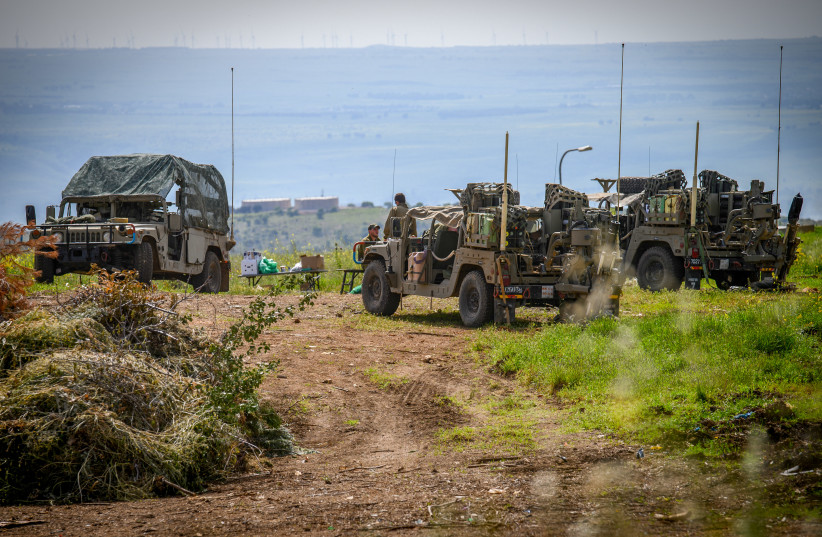Up to 10 Hezbollah fighters infiltrated Israel at its northern border and set up a small armed military position a few meters into Israeli territory over a month ago, it was revealed on Wednesday.
The IDF said “the matter is known and being dealt with the relevant authorities.”
Since the incident, the IDF has been working with the Foreign Ministry and has been in dialogue with UNIFIL to convince the small Hezbollah contingent to withdraw – without the use of force.
The area where the outpost is set up is along the 300 Blue Line in the disputed Har Dov area, with the sub-area sometimes referred to as the Ramtah Lookout Point.
The area is not considered a security threat because it is not close to any Israeli residential areas and is surrounded by IDF forces.

The IDF did not immediately detect the incursion before the outpost was set up, but did do so shortly after and attempted some light dispersal means to remove the group.
At press time, the IDF had not provided the distance between the Hezbollah outpost and the nearest IDF unit. The distance has been said to be relatively small.
The government and the military appear to have decided that making the incursion into a big deal will make it harder to convince Hezbollah to leave on a cooperative basis. It seems the IDF would not even have informed the public of the incursion had the news not come out independently through a KAN report earlier Wednesday.
In fact, this is not the first time. Part of the complication is that there have been dozens of low-grade incidents over the last year or two in which the IDF, or Hezbollah and Lebanon, accused the other of some small violation of the Blue Line border.
Part of the problem is that there is no clear geographic boundary for it. The Blue Line was established by the UN following Israel’s withdrawal from Southern Lebanon in 2000.
Over time, the IDF established a series of fences and other obstacles to create a defensible border that runs as close as possible to the coordinates set by the UN.
But in instances where the UN coordinates created an impractical defensive position in the field, the IDF has tried to make minor alterations in the terrain to make its position defensible.
In this broader context of regular tensions with Hezbollah, the IDF and the government appear to want to resolve the issue without leading to a major escalation, considering the fact that Hezbollah possesses 150,000 rockets and an estimated few hundred or more precision rockets.
Still, the IDF said it is committed to removing the outpost. This incident is viewed as a much lower-level provocation than a deadly incident in March when a Hezbollah terrorist not only crossed the border, but traveled more than 80 km. deep into Israel to Megiddo where he detonated a bomb, seriously wounding an Israeli civilian.
